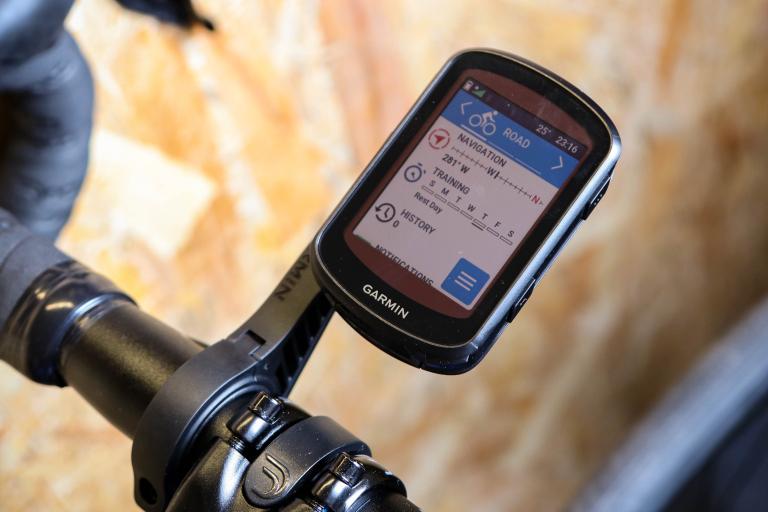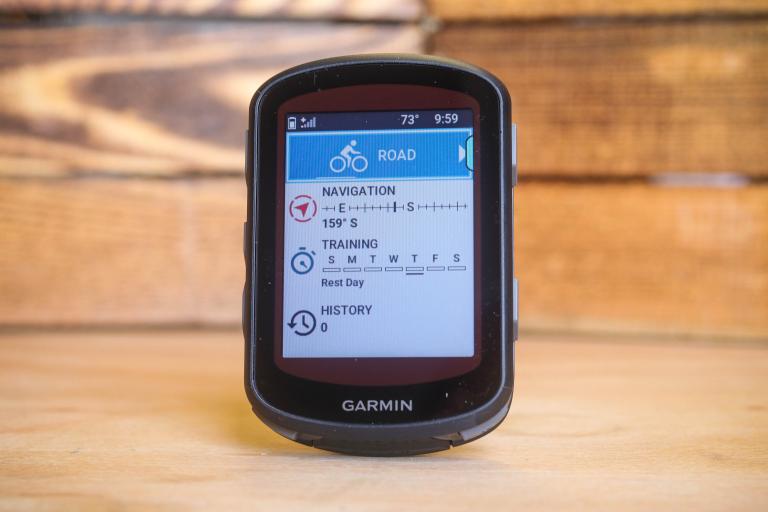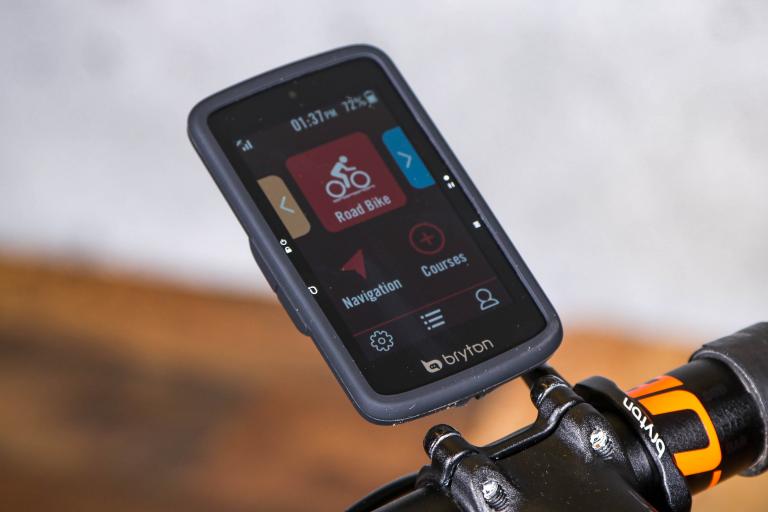- News
- Reviews
- Bikes
- Accessories
- Accessories - misc
- Computer mounts
- Bags
- Bar ends
- Bike bags & cases
- Bottle cages
- Bottles
- Cameras
- Car racks
- Child seats
- Computers
- Glasses
- GPS units
- Helmets
- Lights - front
- Lights - rear
- Lights - sets
- Locks
- Mirrors
- Mudguards
- Racks
- Pumps & CO2 inflators
- Puncture kits
- Reflectives
- Smart watches
- Stands and racks
- Trailers
- Clothing
- Components
- Bar tape & grips
- Bottom brackets
- Brake & gear cables
- Brake & STI levers
- Brake pads & spares
- Brakes
- Cassettes & freewheels
- Chains
- Chainsets & chainrings
- Derailleurs - front
- Derailleurs - rear
- Forks
- Gear levers & shifters
- Groupsets
- Handlebars & extensions
- Headsets
- Hubs
- Inner tubes
- Pedals
- Quick releases & skewers
- Saddles
- Seatposts
- Stems
- Wheels
- Tyres
- Health, fitness and nutrition
- Tools and workshop
- Miscellaneous
- Buyers Guides
- Features
- Forum
- Recommends
- Podcast
review
 Cateye Strada Slim
Cateye Strada Slim£49.99
VERDICT:
Excellent cycle computer with neat new sensor and the easiest of user interfaces; hard to fault
Weight:
25g
Contact:
At road.cc every product is thoroughly tested for as long as it takes to get a proper insight into how well it works. Our reviewers are experienced cyclists that we trust to be objective. While we strive to ensure that opinions expressed are backed up by facts, reviews are by their nature an informed opinion, not a definitive verdict. We don't intentionally try to break anything (except locks) but we do try to look for weak points in any design. The overall score is not just an average of the other scores: it reflects both a product's function and value – with value determined by how a product compares with items of similar spec, quality, and price.
What the road.cc scores meanGood scores are more common than bad, because fortunately good products are more common than bad.
- Exceptional
- Excellent
- Very Good
- Good
- Quite good
- Average
- Not so good
- Poor
- Bad
- Appalling
Have you lost a few pounds through your rigorous training regime in recent weeks? Started shaving your legs to get that pro look? Great news - this is the cycle computer for you. CatEye say that the new Strada Slim is "smooth, sleek & slimmed down - like the riders and bikes its designed for". Portly mountain-bikers look away now, then.
This is an evolution of the existing (and excellent) Strada wireless computer rather than a new model. The head unit is thinner (but fractionally wider) and the screen is significantly bigger (23%, say CatEye). Probably the most significant change is that the sensor unit has been completely redesigned to fit on the inside face of the fork leg rather than behind it. In use, the Strada Slim is almost identical to the previous version.
Let's look at what's new then. The larger head unit gives space for the LCD characters to be a little bigger, aiding readability. I found the previous Strada pretty easy to read anyway, but the display here is definitely an improvement.
One of my favourite things about the Strada (including its new Slim iteration) is the absence of buttons on the face of the head unit. Everything you need to access in day to day use is done by pressing the face of the unit itself, ideally towards the bottom. There's a button hidden on the back which pushes against the mount when you jab the face, with display modes scrolled with a short press and reset with a long press. It really is simplicity itself and the best user interface of any computer I've used, so it is good to see that CatEye haven't messed with this aspect of the design.
The head unit is 35% thinner and lighter, say CatEye. It was pretty light to begin with and I'd never found myself bothered by the bulk of the previous generation, so I'm not wildly excited by these most marginal of gains. The mount is new, though. CatEye have ditched their Flex Tight bracket for the head unit, replacing it with a simple bracket which is held to the bar or stem via a choice of rubber o-ring or zip tie (both are supplied). Maybe this is a gram or two lighter than previously, but I rather liked the Flex Tight for the way that you could switch between bikes or from bar to stem without needing to go find some cutters and new zip ties. In any case the interface between head unit and bracket is unchanged, so it would be easy to use a Flex Tight bracket if you wanted.
CatEye say that the reduction in size and weight has been achieved through the use of a smaller battery, but run times are maintained through improvements in efficiency - the head unit battery should last about a year and the sensor about 10000km. The sensor uses the same battery as previously, so don't worry if (like me) you've still got some CR2032 cells kicking around, while the head unit now has a CR1616.
The only change to the user interface is that it now has a "customisable display". What this means is that if there are some of the modes on the lower half of the screen that you simply never use, you can switch them off, so that you no longer see them when scrolling through. This is a fairly limited level of customisation, but I guess some people might like being able to have only the functions that they're really interested in available.
The full list of modes is as follows: elapsed time, trip distance, trip distance 2 (which can be reset separately to the other counters), average speed, maximum speed, odometer (total miles) and clock. I've used other computers which have more modes, such as mile countdown, elevation etc but for my personal tastes and the type of riding I do, the Strada has everything I need. If you want heart-rate and cadence then CatEye has a version of the Strada that includes these.
As I mentioned, the sensor looks very different to previous ones from CatEye (and most competitors) as it is now a longer, much thinner unit which is fixed flat to the inside of the fork, held in place with either o-rings or zip-ties. This means that viewed from the side of the bike, it is rather less visible (although the o-ring or zip tie used to hold it in place are still pretty noticeable unless your forks are dark-coloured. This will only work if you have the right gap between your front wheel's spokes and the inner face of your forks - CatEye specifies between 12mm and 17mm to give the required gap of less than 5mm between the magnet and the sensor.
On my commuter which has disc brakes, this meant that I had to install the sensor on the right hand fork leg, as the spokes on the disc side were too far from the fork. I don't think it would work with suspension forks at all. For this reason, CatEye has not discontinued the conventional sensor which mounts behind the fork leg. On my bike it was fairly simple to fit the new sensor and I wouldn't expect to have problems on most road bikes. I just had to find the right vertical position where the gap was right, which in reality took no longer than installing the old-style sensor did.
All in all this is an improvement over the existing model which itself was very good. With many riders now seeing a Garmin as an essential accessory, the market for this type of device may be declining, but I am quite happy using something like this in tandem with a smartphone in my pocket. Its list price of £50 means it's not the cheapest of non-GPS computers but I think it's probably the best I've used.
Verdict
Excellent cycle computer with neat new sensor and the easiest of user interfaces; hard to fault
road.cc test report
Make and model: Cat Eye Strada Slim
Size tested: Black (White also sent)
Tell us what the product is for, and who it's aimed at. What do the manufacturers say about it? How does that compare to your own feelings about it?
The Strada Slim computer is a 'slimmed down' version of the original Strada Wireless computer. Newly designed circuitry and increased efficiency allows for a smaller battery, so the computer can be thinner and lighter. The smaller package still boasts the same great cycling features and functions with a larger screen and the ability to customize your display by showing only the functions you select.
Designed for road bikes, the Strada Slim comes with the Slim Sensor that can be placed inside the front fork so it is virtually out of sight, giving your road bike a sleek, aerodynamic look.
Tell us some more about the technical aspects of the product?
Current speed: 0.0(4.0)~105.9km/h
Total distance: 0.0~9999.9/10000-99999km
Trip distance 1: 0.00~999.99km
Trip distance 2: 0.00~999.99/1000.0~9999.9km
Elapsed time: 0:00'00"~9:59'59"
Average speed: 0.0~105.9km/h
Maximum speed: 0.0(4.0)~105.9km/h
Wireless transmission: Speed
Clock: 0:00'~23:59' [1:00'~12:59']
Pace arrow: Yes
Auto power saving: Yes
Auto mode: Yes
Dual tire size: Yes
Tire size: 100mm~3999mm (default:A 2096mm / B 2096mm)
Battery: Computer : CR1616 X1�€€Sensor : CR2032 X1
Battery life:
Computer:approx 1 year (1hr use per day) Sensor:approx 10,000km [6,250miles] in total distance
Dimension : 47.0 X32.0 X12.5mm
Weight: 12 grams
Rate the product for quality of construction:
8/10
Lightweight but well built and waterproof.
Rate the product for performance:
9/10
Easier to read, still just as easy to use.
Rate the product for durability:
9/10
From past experience with CatEye Strada computers, it takes some serious abuse to break them.
Rate the product for weight, if applicable:
9/10
Smaller and lighter than previous version.
Rate the product for value:
7/10
There are cheaper computers out there but I'd suggest they're not as good.
Tell us how the product performed overall when used for its designed purpose
Flawlessly. Simple, easy to install and easy to use.
Tell us what you particularly liked about the product
New design of sensor is neater and less susceptible to getting knocked out of position.
Tell us what you particularly disliked about the product
Was a little sorry to see the Flex Tight bracket replaced with a zip tie bracket, but this isn't really a big deal.
Did you enjoy using the product? Yes.
Would you consider buying the product? If I needed a new computer, definitely. I'd struggle to justify paying to replace an existing Mk1 Strada with this.
Would you recommend the product to a friend? Absolutely.
About the tester
Age: 36 Height: 190cm Weight: 78kg
I usually ride: Boardman CX team for the daily commute My best bike is: Rose Xeon CRS
I've been riding for: Over 20 years I ride: Most days I would class myself as: Expert
I regularly do the following types of riding: road racing, time trialling, cyclo cross, commuting, touring, club rides, sportives, general fitness riding, fixed/singlespeed, mtb,
Jez spends his days making robots that drive cars but is happiest when on two wheels. His roots are in mountain biking but he spends more time nowadays on the road, occasionally racing but more often just riding.
Latest Comments
- ktache 2 hours 37 min ago
The small frame, the aggressive posture, lots of standover height.
- mctrials23 3 hours 32 min ago
As i've said before, the police should be sued for a lot of money when someone they have knowingly ignored has gone on to commit a serious crime....
- David9694 3 hours 40 min ago
'Bad parking' blocks firefighters multiple times on same emergency call-out...
- David9694 3 hours 44 min ago
Cambridgeshire boy, 13, crashes Audi into garden wall after taking it from home...
- Adam Sutton 4 hours 30 min ago
Good stuff. Now do it on cycleway C9 through Hammersmith to Chiswick.
- mark1a 4 hours 39 min ago
It's technically allowed but it's not known as "London's Orbital Car Park" for nothing.
- Dogless 5 hours 47 min ago
You're defending bombing hospitals and refugee camps and starving children.
- mattw 8 hours 27 min ago
Used car salesman is a complete attention-seeking plank....
- tubasti 8 hours 44 min ago
I don't know if they're any better, but they's certainly become more boring.
- FionaJJ 9 hours 10 min ago
At risk of being cynical, and stereotyping the police, it's so they don't have to leave the comfort of their panda cars and pursue on foot when...




Add new comment
7 comments